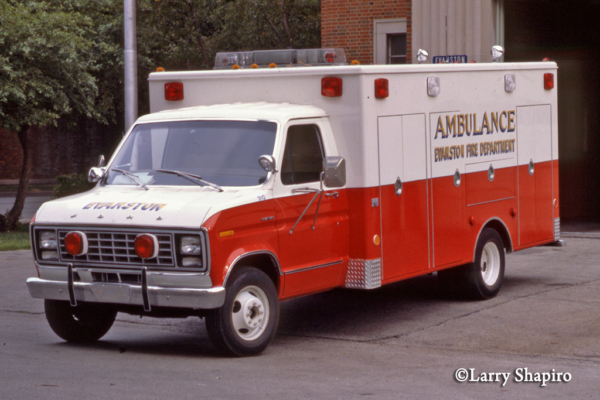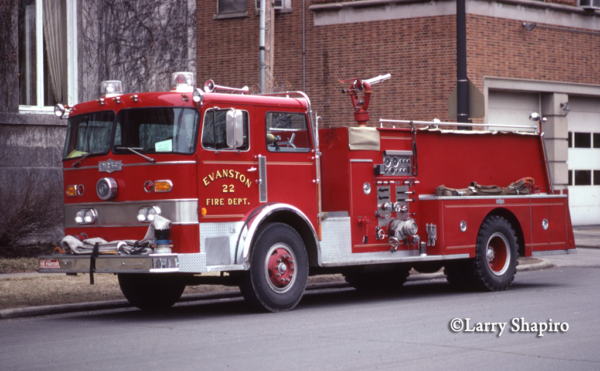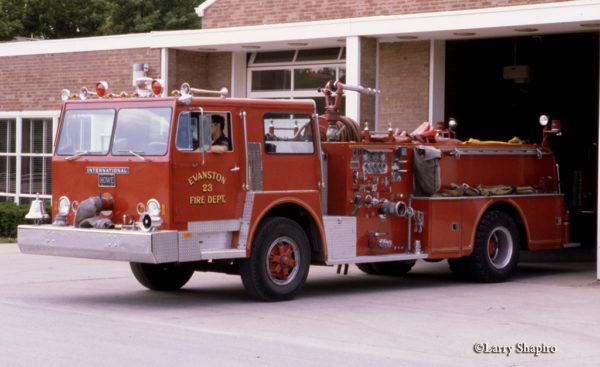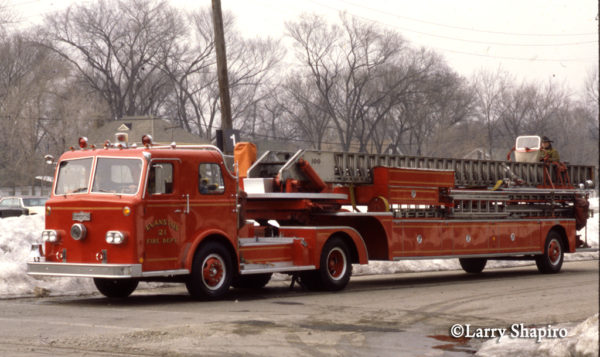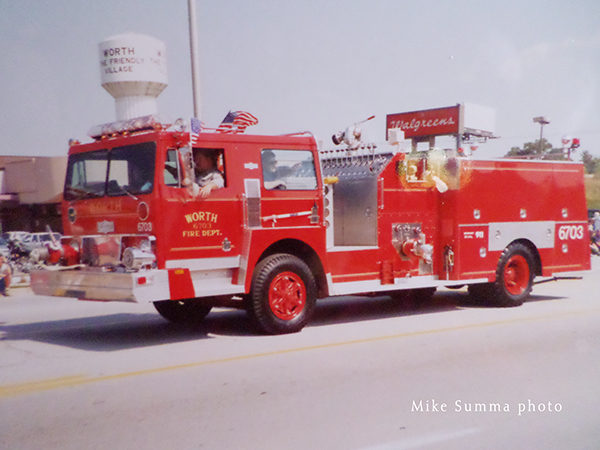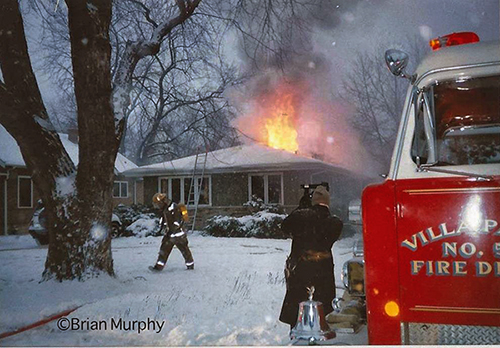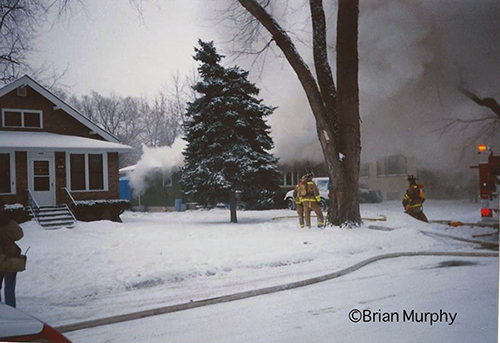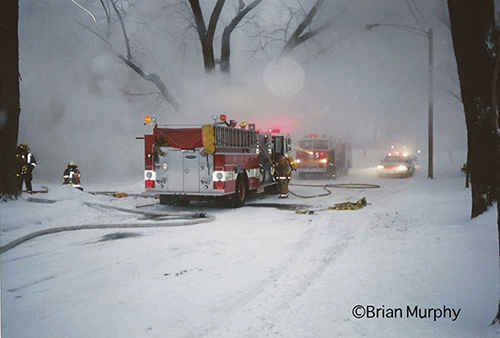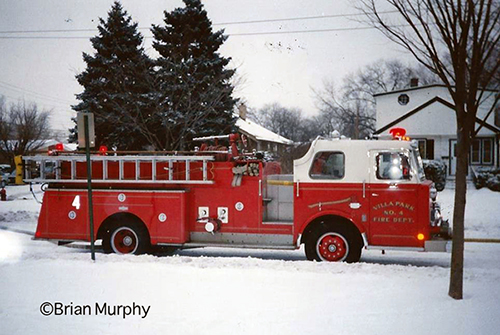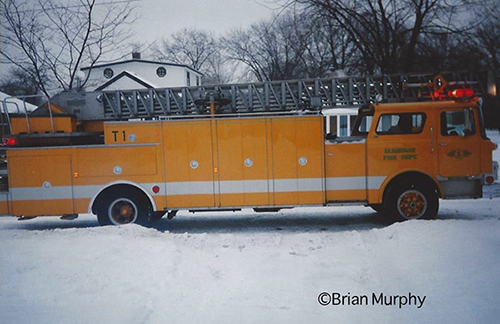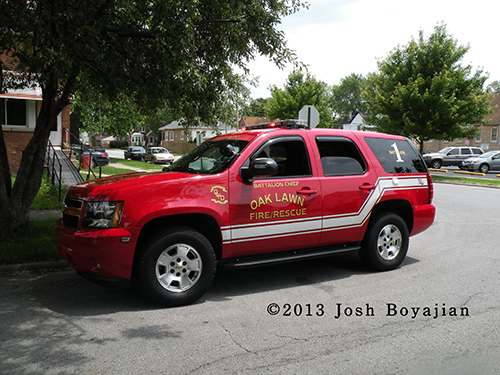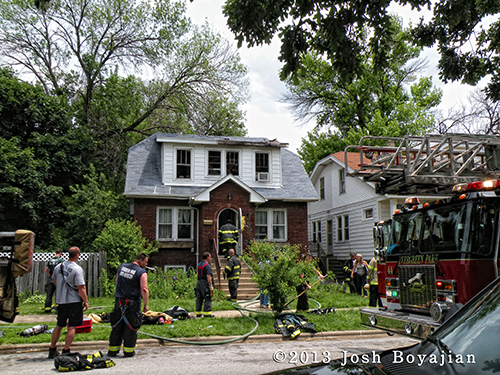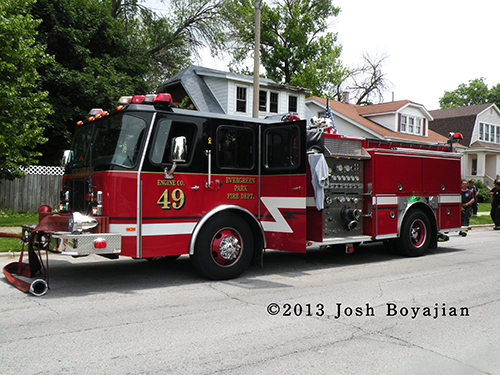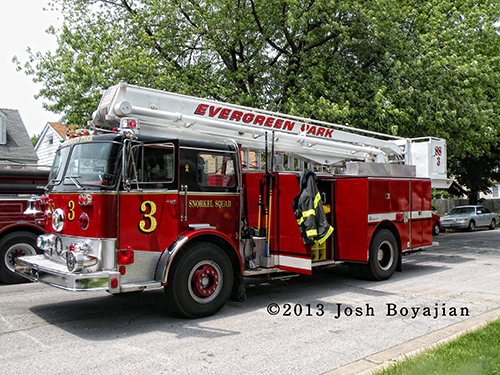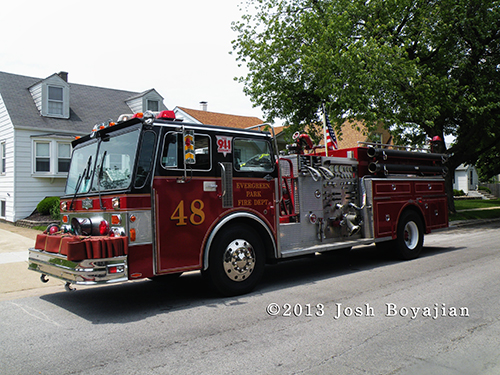From Phil Stenholm:
Another installment about History of Evanston Fire Department
GO YOU NORTHWESTERN!
The Mutual-Aid Box Alarm System (MABAS) was established in 1968 to provide pre-planned mutual-aid responses to large fires involving north suburban fire departments and fire protection districts. The Evanston Fire Department was assigned to MABAS Division 3, along with the Glencoe, Glenview, Highland Park, Highwood, Morton Grove, Niles, Northbrook, Northfield, Park Ridge, Skokie, Wilmette, and Winnetka fire departments, the Deerfield-Bannockburn, Glenview Rural, Northbrook Rural, and North Maine fire protection districts, and the Glenview Naval Air Station.
The Glenview FD was the designated MABAS Division 3 dispatch center, and Niles FD was the back-up. The mutual-aid fire channel known as NIFERN (Northern Illinois Fire Emergency Radio Network – 154.265 Mhz) was used by MABAS. In the event of a major fire, the stricken fire department would contact the MABAS dispatcher via NIFERN and advise the box number, the physical location of the incident, and the alarm level being requested. The MABAS dispatcher would then transmit the alarm over the NIFERN radio frequency. Units responding to the box alarm were responsible for switching to NIFERN and contacting the MABAS dispatcher, advising the dispatcher that they were en route. Because all companies responding to a MABAS box alarm were required to be staffed by at least four firefighters, only EFD Station # 1 or Station # 2 companies responded to MABAS box alarms.
Most of the fire departments in Division 3 had more than one box card, with a different response depending on the box number’s location. Evanston, however, had just one box card (# 625), with Lake & Elmwood (Fire Station # 1) listed as the location of the box. A Wilmette engine and a Skokie truck were due to respond into Evanston on a box alarm, with a Skokie engine due on a second alarm, and a Winnetka engine (changed to a Winnetka Snorkel in 1983) and a Morton Grove engine due on a third alarm. A Glenview Naval Air Station ARFF was also listed on the card in the event it was needed. Otherwise, anything beyond a third alarm would be a “special call.” Also, there was no “dive box,” no “ambulance box,” no “fire investigation box,” et al in 1968. MABAS existed strictly for large fires at that time.
The EFD was not due to respond everywhere in MABAS Division 3, and where an Evanston engine, truck and/or squad was due to respond, the level of the alarm on which it was due varied based on the box number. In some cases, the Evanston company was just changing quarters to provide back-up coverage. An Evanston engine, truck, and squad were on the Morton Grove box card, an Evanston engine and truck were on Niles and Skokie cards, an Evanston engine was on the Glenview, Northbrook, North Maine, and Wilmette cards, an Evanston truck was on the Glencoe, Northfield, and Park Ridge cards, and an Evanston squad was on the Winnetka card. Although the Evanston Fire Department routinely responded to MABAS box alarms, the EFD almost never requested a MABAS box back in the day, even for a large fire. A call-back of off-duty firefighters was required before a chief could request a MABAS box, so when immediate mutual-aid was needed, EFD chiefs would just request assistance directly from Wilmette and/or Skokie.
The Evanston Fire Department’s Fire Prevention Bureau underwent several significant personnel changes in the years 1965-68. Long-time FPB inspector Capt. Harry Meginnis retired in 1965 after 23-years of service with the EFD, and 25-year veteran Assistant Chief Harry Schaeffer Jr – commander of the Fire Prevention Bureau – retired in 1967 after he was appointed Illinois State Fire Marshal by Illinois Gov. Otto Kerner,
FPB inspector Capt. Tom Hanson was promoted to assistant chief fire marshal and replaced Chief Schaeffer as commander of the FPB, but then Chief Hanson himself retired after twenty years of service in 1968 to take a high-paying job in the private sector. FPB inspector Capt. Robert Schumer was then promoted to assistant chief fire marshal and replaced Chief Hanson as FPB commander. Capt. William Lapworth and Capt. Joe Thill were transferred to the FPB in 1967-68, and they worked as FPB inspectors until they retired.
In addition to the changes in the FPB circa 1965-69, veteran firemen Nicholas Jung (24 years of service), George M. Harrison (23 years of service), and John Boho (22 years of service) retired in 1966, Capt. Ervin Lindeman retired after 31 years of service in 1967, firemen Stan Broslovik (22 years of service) and James Liozzo (20 years of service) retired in 1968, and Capt. Lou Peters retired after 27 years of service in 1969. Also, Capt. Richard Zrazik and Fireman Frank Sherry Jr retired on disability pensions, Capt. Zrazik in 1966, and firefighter Sherry in 1967.
Also, firemen Don Searles (1965), Joe Planos (1966), Bill Moore (1967), Henry Harloff and Pat Morrison (1968), and Tom Linkowski (1969) were promoted to captain during this period of time. New firemen hired were Vincent McEnaney (1965), Darold Olson, Ray Cottini, Jim McLaughlin, Nick Waldron, and Anthony Broz (1966), John Wright, Max Sheaffer, Pat Lynn, Albert Lesiak, William Beckley, and John Wilkinson (1967), Dave Franzen, Randy Drott, Michael Bunyon, and Jerry McDermott (1968), and John Graber, John Fisher, Neal Smithweck, and Robert Mulherin (1969).
It had been a sore spot in Evanston for many years that Northwestern University was tax exempt and therefore received fire protection from the city without paying for it. Then on November 18, 1968, Northwestern University unexpectedly donated the $29,602 needed to pay for a new Pirsch pumper for the Evanston Fire Department. It wasn’t totally altruistic, however, as the donation was a “thank you” from Northwestern after the Evanston City Council agreed to re-zone the square-block northeast of Emerson & Maple from single-family to high-rise / multi-family. This allowed N.U. to build the 10-story Engelhart residence hall for graduate students at 1915 Maple Avenue. It was the second-tallest building in Evanston after it was completed in 1971.
Since the pumper was donated by Northwestern University, one of the aldermen suggested that it should be painted either purple or white with purple stripes, with a “Willie the Wildcat” sticker on the doors, but that didn’t happen. it was presumed at the time of the donation that the new pumper would go into service at Fire Station # 3 since Engine 23 was first-due to the Northwestern University campus, with Engine 23’s 1958 Seagrave moving to Station # 5 to replace Engine 25’s 1952 Pirsch.
The new Pirsch pumper arrived in May 1970, and it was placed in service at Station # 2 — not at Station # 3, as had been expected. Engine 22 — the 1952 Pirsch 1000 / 100 TCP ex-S21 that had been rebuilt as a TCP in 1966 — relocated to Station # 5, where it became the new Engine 25. The 1952 Pirsch 1000 / 100 TCP that had been Engine 25 1952-70 was then placed into reserve at Station # 5 as Engine 27. The 1968 Pirsch (Engine 21) and the 1970 Pirsch (Engine 22) were nearly identical rigs, the primary difference being Engine 21 had a 1250-GPM pump, while Engine 22 had a 1000-GPM pump.
Because the donation of the 1970 Pirsch pumper was unexpected and had not been part of the EFD’s master plan for apparatus replacement, the 1949 Seagrave 1000 / 80 TCP (Engine 26 – ex-E22) was no longer needed as a reserve pumper once the new Pirsch pumper arrived and the 1952 Pirsch pumper at Station # 5 was placed into reserve, and so it was sold at auction to a private collector for use as a parade and party vehicle. It was mainstay in the North Evanston Fourth of July Parade for many years.


